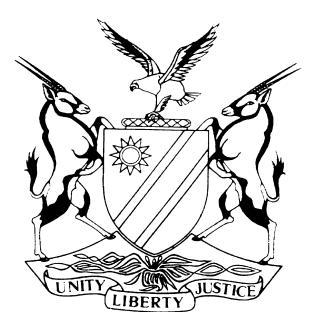NOT REPORTABLE 

HIGH COURT OF NAMIBIA MAIN DIVISION, WINDHOEK
REVIEW JUDGMENT
Case No: CR 37/2017
THE STATE
versus
JOSEPHINE BOOIS
(HIGH COURT MAIN DIVISION REVIEW REF NO. 842/2016)
(MAGISTRATE’S SERIAL NO. 20/2016)
Neutral citation: S v Boois (CR 37/2017) [2017] NAHCMD 157 (9 June 2017)
Coram: LIEBENBERG J et SHIVUTE J
Delivered: 9 June 2017

ORDER

The conviction and sentence are set aside.

REVIEW JUDGMENT

SHIVUTE J (LIEBENBERG J concurring)
[1] The accused was convicted of assault with intent to do grievous bodily harm, read with the provisions of the Domestic Violence Act 4 of 2003. The accused was sentenced to N$3000 (Three thousand Namibia Dollars) or 6 (six) months imprisonment.
[2] I directed the following query:
‘How did the court satisfy itself that the accused intended to cause grievous bodily harm if when asked she said she did not know that she could cause serious injury?’
[3] The learned magistrate replied as follows:
‘I concede that the accused did not admit the elements that she intended to cause grievous bodily harm.
This amounts to a misdirection on my part as the magistrate. I therefore implore for the conviction and the sentence to be set aside and for the matter to be sent back to me as the trial magistrate to enter a plea of not guilty and for the matter to be scheduled for trial.’
[4] In this matter, the learned magistrate could not have been satisfied that the accused admitted all the allegations as charged, because the accused stated that the complainant wanted to assault her but managed to run away, therefore raising an element of self-defence. Immediately as the accused raised a defence, the court was supposed to enter a plea of not guilty in terms of s 113 of the Criminal Procedure Act 51 of 1977 and inform the accused that facts admitted so far would still stand as proof of such allegations and call upon the prosecution to lead evidence.
[5] The accused never admitted to have an intention to cause serious injury to the complainant, she only admitted to have thrown the bottle at the complainant. The purpose to apply s 112 (1) (b) of the CPA is to determine whether the accused admits all the elements of the offence, in other words the accused must give an unequivocal plea of guilty. The court cannot make inferences from the accused’s answers.
[6] Miller J stated in S v Mbele 1966 (1) PH H176 (N) that:
‘. . . however one expresses it, it is at least clear that there must be an intent to do more than inflict the casual and comparatively insignificant and superficial injuries which ordinarily follow upon an assault. There must be proof of an intent to injure and to injure in a serious respect.’
[7] In my view, the magistrate should have entered a plea of not guilty in terms of s 113 when this fact arose, unless the prosecutor was prepared to accept a plea of common assault. However, the accused was sentenced to N$3000 or 6 months’ imprisonment. She had already served her sentence and I do not see it necessary to remit the matter to the magistrate.
[8] In the result the following order is made:
The conviction and sentence are set aside.
----------------------------------
NN SHIVUTE
Judge
----------------------------------
JC LIEBENBERG
Judge